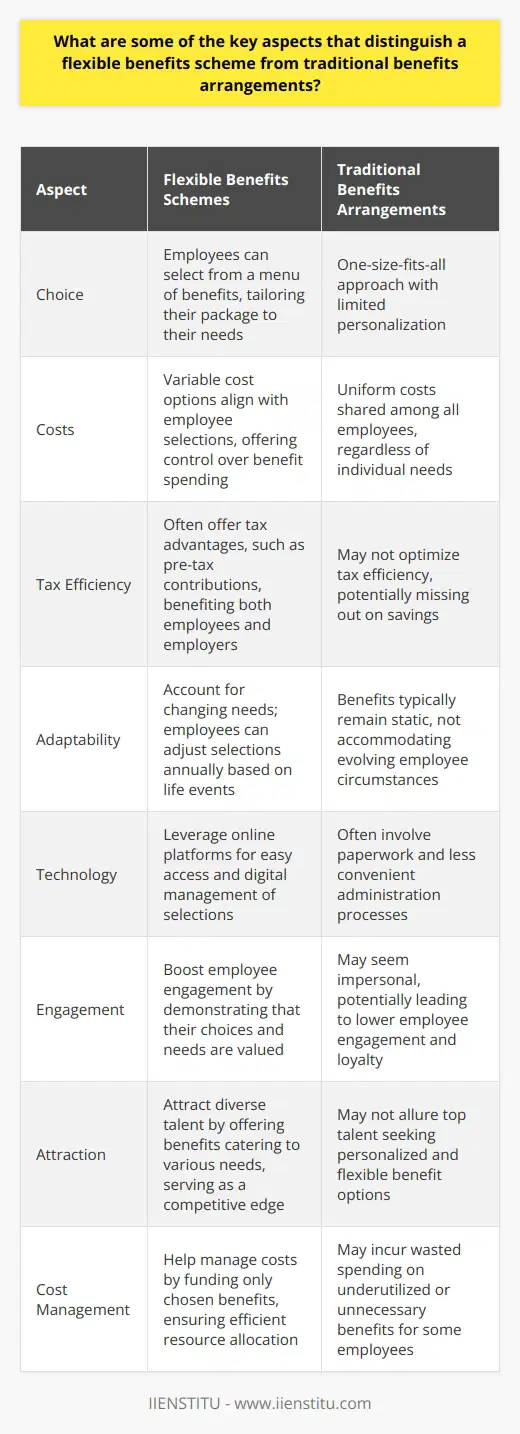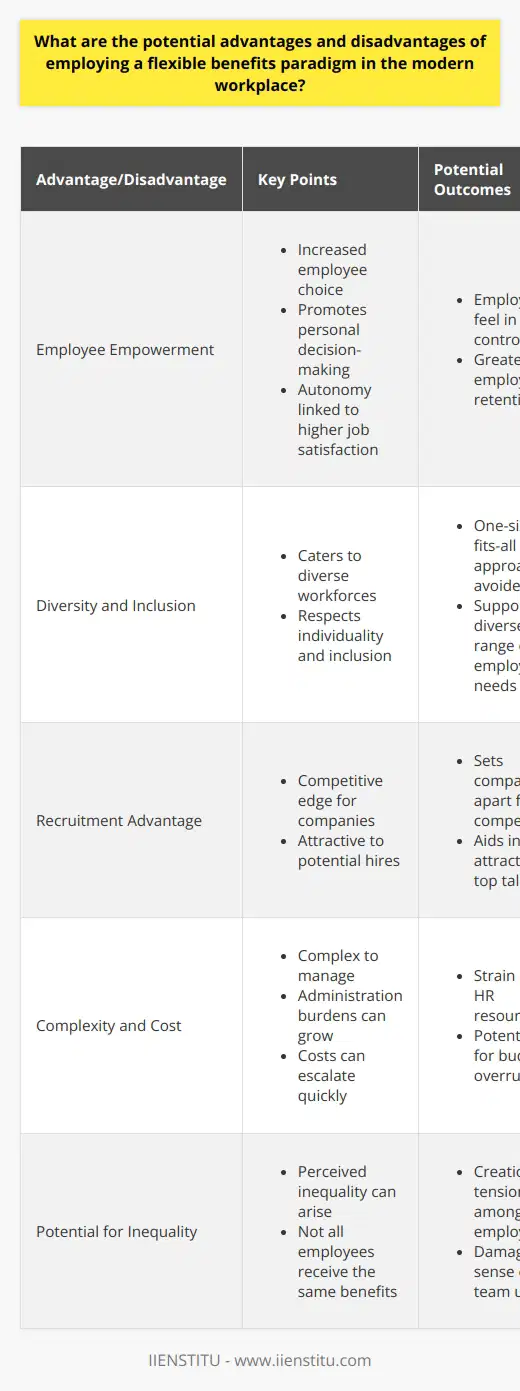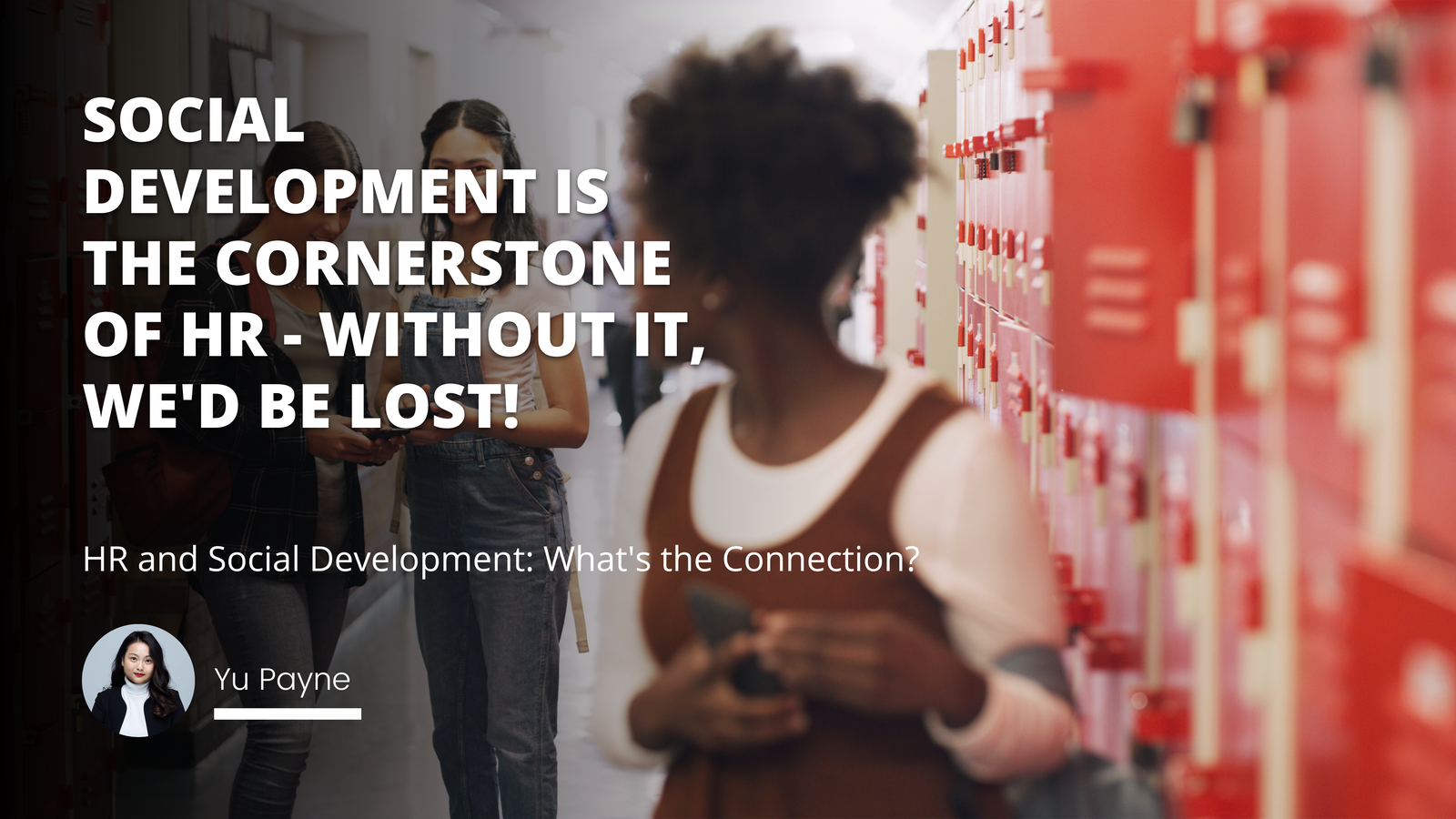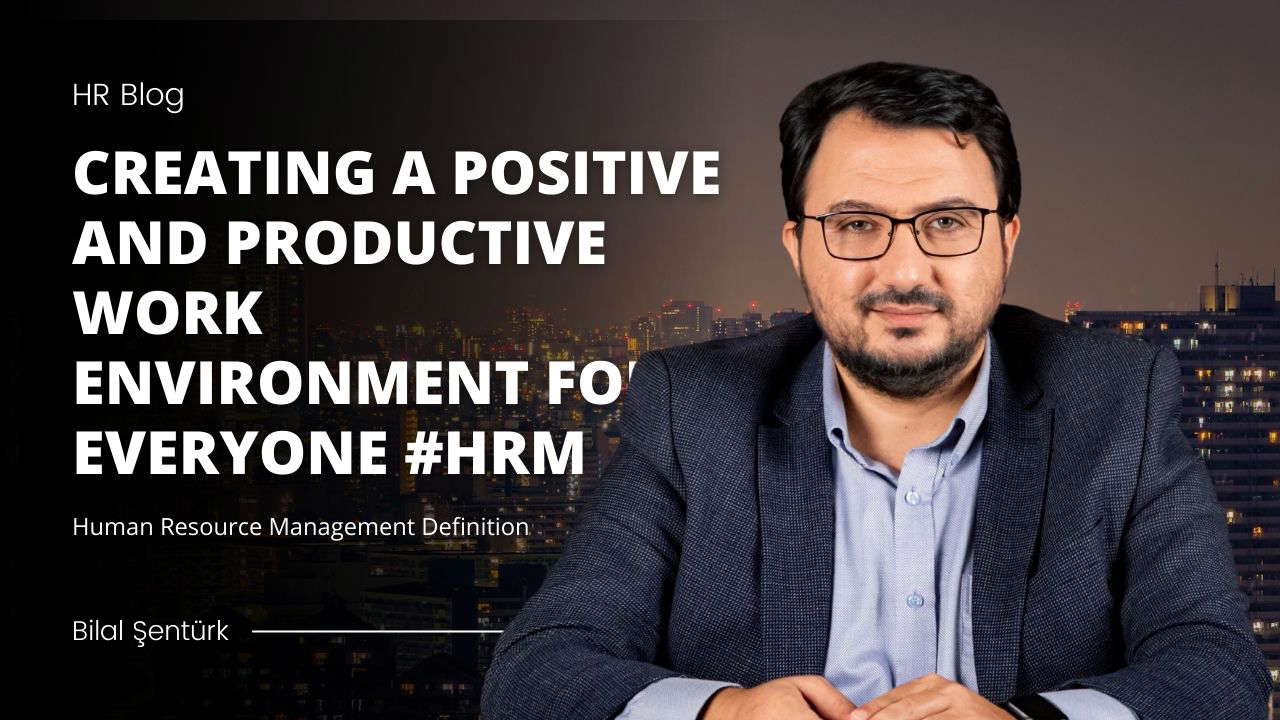
The modern employment landscape is continually evolving, with innovative strategies emerging to enhance the synergy between employee satisfaction and organizational growth. One such strategic development within the realm of Human Resources is the implementation of flexible benefits. These benefits packages are designed to cater to the diverse needs and preferences of the workforce, marking a departure from the one-size-fits-all packages of the past.
Flexible benefits have gained significant traction, responding to the call for personalized employee experiences and contributing to an up-to-date and dynamic corporate world.
Definition and explanation of flexible benefits
Flexible benefits, commonly known as "flex benefits" or "cafeteria plans", are employer-sponsored programs that offer employees a choice between various benefits options. They can include health insurance, retirement saving plans, vacation days, and other perks.
These packages are tailored to individual employees' unique needs and lifestyles, allowing them to select the benefits that align with their personal circumstances—a significant shift from the traditional approach, where employers predetermined the benefits provided without consideration for individual variability.
The rising popularity and relevance in today's corporate world
Today's corporate climate necessitates a holistic approach to employee welfare. As such, the prominence of flexible benefits has surged, with employees seeking more control over their work-life balance and benefits selection. Employers too recognize the strategic advantages, including improved employee morale, increased loyalty, and competitive positioning in the job market.
Flexible benefits are seen less as a mere perk and more as a core component of a company’s value proposition to current and prospective employees.
The Concept of Flexible Benefits
In the endeavor to refine HR strategies, companies must conceptualize flexible benefits with a clear understanding of its constituents and the mechanics. Such understanding brings about an arrangement where both employee welfare and organizational health are in equilibrium.
Explanation of the basic structure and design of a flexible benefits package
A flexible benefits package is structured to offer employees a "menu" of benefits options, with the provision for the individual to select according to their preferences and needs. Typically, employees receive a budget or a set number of "credits" to spend on these benefits. This approach offers autonomy and personalization in the benefits selection process, acknowledging the diversity in the workforce.
Various elements that constitute flexible benefits
Health insurance
A primary aspect of flexible benefits is health insurance, which can vary from basic coverage to inclusive plans covering everything from dental to mental health services. The choice allows employees to prioritize their and their dependents’ health needs without being constrained to a standard option.
Retirement plans
Flexible retirement plans cater to employees at different stages of their career. Younger employees might prefer lower contributions with higher take-home pay, while those closer to retirement may choose to increase their savings.
Wellness programs
Another innovative element can be wellness programs that offer gym memberships, nutritional counseling, or mental health days. Such initiatives improve overall employee well-being—critical for long-term job satisfaction.
Opportunities for upskilling
In a rapidly changing job market, employees often seek hr online course offerings or other online certification courses as part of their benefits. This focus on professional development not only boosts individual competencies but also serves the organization’s long-term interests.
Advantages of Flexible Benefits
Flexible benefits have demonstrated substantial advantages to both employees and employers, impacting various facets of the workplace.
The role in promoting employee wellness and job satisfaction
Explanation with real-life examples
Employees today value work environments that support their holistic well-being. Consider a case where an employee with chronic health conditions opted for a benefits package with an enhanced healthcare plan.
The ability to personalize their healthcare coverage directly contributes to their wellness, reduces related stress, and boosts their satisfaction and loyalty.
Contribution to employee retention and talent attraction
Details of supporting research studies or surveys
Numerous surveys validate that flexible benefits influence employee retention and attract top talent. For instance, a 2020 survey reported that 80% of employees would prefer additional benefits to a pay raise. Companies that offer such flexibility often see reduced turnover and a robust applicant pool.
Influence on improving productivity and enhancing company performance
Statistical evidence and case studies
Productivity often increases when employees are satisfied with their jobs, which includes the benefits they receive. A study by the Corporate Executive Board found that employees who are most satisfied with their benefits are 4 times more likely to be highly productive.
Access to online certification courses for skill improvement or customizable retirement plans reflects on the company's performance through heightened employee output.
The Process of Implementing Flexible Benefits
Implementing flexible benefits in an organization requires intentional planning and understanding of both the workforce and the company's strategic goals.
Factors to consider when designing a flexible benefits package
Company size
The size of the company influences the range and depth of benefits that can be offered. Larger companies might offer more options due to economies of scale, whereas smaller ones may focus on a handful of highly valued choices.
Company culture
The company culture is pivotal in determining what sort of benefits resonate with the workforce. A young tech company might prioritize educational benefits, such as access to hr online course materials, while more traditional corporations might emphasize robust retirement packages.
Employee preferences
Understanding employee demographics and preferences is crucial for a successful benefits package. Surveys and feedback sessions can help identify what benefits employees value most, thereby assisting HR teams in creating a responsive and tailored plan.
The impact of digital tools in benefits management
Digital platforms and software play a significant role in the administration of flexible benefits. These tools offer simplified enrollment processes, easy access to information, and the ability to customize selections in real-time—all of which enhance the employee experience.
Understanding legal implications and regulatory standards
It’s imperative to consider the legal and tax implications of flexible benefits. Companies must comply with national and local regulations when designing their packages to avoid legal issues that could undermine the benefits program.
Potential Challenges and Solutions
Despite the several advantages of implementing flexible benefits, challenges do exist. A proactive approach to these challenges is essential for harnessing the full potential of flex benefits systems.
Discussion on the possible obstacles in implementing and managing flexible benefits
Cost
The cost can be a significant barrier, with the concern that flexible benefits systems may be expensive to implement and maintain. Companies might worry about the unpredictability of costs associated with employee selections.
Employee awareness and understanding
Another challenge is ensuring that employees fully understand the array of available options. Misunderstanding can lead to underutilization of the benefits, negating the advantages of flexibility.
Aligning benefits with company policies and objectives
Aligning the flexible benefits package with overarching company objectives is crucial yet often complicated. It requires a strategic view that integrates benefits into the company’s overall talent management approach.
Solutions and strategies to overcome these challenges
Enhancing communication and awareness
Regular, clear communication, training sessions, and support tools can improve employee understanding and appreciation of the available benefits.
Aligning benefits design with company goals
Benefits should be designed to reflect and support the company's strategic direction—considering factors such as international expansion, remote working trends, and changing employee demographics.
Regular review and update of the benefits package
The benefits landscape is dynamic. Thus, regular review and adaptation of the benefits package is necessary to address changing needs and maintain relevance.
The implementation of flexible benefits emerges as a keystone in constructing a future-ready workplace. These tailored packages effectively marry employee preferences with organizational objectives, fostering an environment of shared prosperity and satisfaction.
Recap of the importance and advantages of flexible benefits
The move towards flexible benefits reflects a deep understanding of the modern workforce’s needs, serving as a ladder to enhanced wellness, satisfaction, and productivity.
Encouragement for more organizations to consider implementing flexible benefits
Organizations are encouraged to evaluate the positive implications discussed and envision flexible benefits packages as strategic investments rather than mere costs.
Final thoughts on the potential of flexible benefits to shape the future of work.
In sum, the landscape of work is pivoting toward increased personalization and flexibility, and flexible benefits stand at its forefront. For companies vying for the best talent and aiming for optimal productivity, embracing this modern workplace paradigm is not just prudent—it's essential.
Frequently Asked Questions
What are some of the key aspects that distinguish a flexible benefits scheme from traditional benefits arrangements?
Understanding Flexible Benefits Schemes
Employers often provide benefit programs. Traditionally, these were one-size-fits-all. Modern workplaces demand flexibility. Flexibility reflects diverse employee needs. Here's how flexible benefits schemes differ.
Tailored Choice
Flexible schemes empower employees. They can select from a menu of benefits. Traditional programs lack such personalization. Choice matters in today's job market.
Variable Cost Options
These schemes offer options with varied costs. Costs align with employee selection. Traditional plans usually share uniform costs. Employees appreciate control over their benefit spending.
Tax Efficiency
Many flexible plans offer tax advantages. Pre-tax contributions are one example. Traditional benefits might not optimize tax efficiency. Employees and employers save on taxes together.
Changing Needs
Life events alter benefit needs. Flexible schemes account for this. Employees can adjust their selections annually. Traditional benefits typically stay static. Dynamic options are thus more desirable.
Technology Integration
Modern schemes leverage technology. Online platforms make access easy. Employees manage their selections digitally. Traditional plans often involve paperwork. Digital management is quick and convenient.
Employee Engagement
Flexible benefits schemes boost engagement. Employees feel the company values them. This is because their choices matter. Traditional benefits may seem impersonal. Engaged employees often exhibit increased loyalty.
Employer Attractiveness
Employers with flexible options stand out. They attract diverse talent. This is because they offer benefits for diverse needs. Traditional benefits may not allure such talent. Flexibility can thus be a competitive edge.
Cost Management
Flexible schemes can help manage costs. Employers fund only the chosen benefits. Traditional benefits may incur wasted spendings. Flexible options mean efficient resource allocation.
In conclusion, flexible benefits schemes offer a modern, personalized approach. They contrast with traditional, uniform plans. Employers and employees favour this modernization. It suits the evolving workforce. It reflects a shift towards individual value.

What are the potential advantages and disadvantages of employing a flexible benefits paradigm in the modern workplace?
Benefits of a Flexible Benefits Paradigm
Employee Empowerment
Flexible benefits increase employee choice. They promote personal decision-making. This autonomy is often linked to higher job satisfaction. Employees feel in control. This can lead to greater employee retention.
Diversity and Inclusion
Benefits flexibility caters to diverse workforces. Different employees have different needs. A one-size-fits-all approach does not work. A flexible plan respects individuality and inclusion.
Recruitment Advantage
Companies with flexible benefits have a competitive edge. They are more attractive to potential hires. Flexibility can set a company apart. It aids in attracting top talent.
Work-Life Balance
Employees can tailor benefits to their lifestyles. This supports work-life balance. Reduced stress and increased well-being often result. A balanced employee is a productive one.
Disadvantages of a Flexible Benefits Paradigm
Complexity and Cost
Flexible programs can be complex to manage. Administration burdens can grow. Costs can escalate quickly. These factors can strain HR resources.
Overwhelming Choices
Too many options can overwhelm employees. Making informed decisions is difficult. Some might choose poorly. This can result in underutilized benefits and dissatisfaction.
Potential for Inequality
Perceived inequality can arise. Not all employees receive the same benefits. This might create tension. It can damage a sense of team unity.
Communication Barriers
Communicating the nuances of flexibility challenges HR. Miscommunication can occur. Employees might miss out on useful benefits. This diminishes the program's value.

How are flexible benefits systems designed and implemented within existing organizational structures?
Understanding Flexible Benefits Systems
Organizations constantly evolve. They adapt to new human resource trends. Flexible benefits systems have gained momentum. Employees look for personalized benefit options. They want their employers to provide such options. Employers aim to attract and retain talent using these systems.
Designing Flexible Benefits
The design phase is critical. Employers assess workforce demographics and preferences. They consider the organizational culture and values. Employers understand legal constraints. They formulate a benefits package that aligns with strategic goals.
Industries differ in benefit needs and preferences. Tech companies might offer different benefits. These could be compared to manufacturing firms. Employers include health, retirement, and wellness benefits. They also offer childcare support and travel allowances. A good mix of benefits provides value.
Employers collaborate with HR experts. They determine the best platforms for benefit management. Technology plays a key role. It enables employees to make choices robustly. Employers strategize communications. They try to be transparent about the available options.
Implementing Flexible Benefits
Implementation follows careful planning. Employers take a step-by-step approach. They prioritize efficient enrollment processes. HR departments provide support throughout.
Training is crucial for both HR personnel and employees. HR must understand the benefits structure. They communicate this understanding. Employees need to know how to select and manage their benefits.
Technology aids in ease of access. Employees use portals to manage their benefits. Employers ensure data security and privacy on these platforms.
Employers track the uptake of different benefits. They analyze the use to refine offerings. Surveys and feedback tools help gather employee sentiment. Employers adjust the benefits package in response.
Ensuring Compliance and Continuity
Benefit systems must comply with regulations. Employers regularly review legal guidelines. They adapt their systems to maintain compliance.
Audits help identify discrepancies. Employers correct any issues promptly. They maintain system integrity this way. Monitoring and reporting ensure transparent operations.
Flexible benefits should be sustainable. Employers balance cost and value. They anticipate future changes in workforce expectations.
In conclusion, designing and implementing flexible benefits requires careful planning and ongoing management. It enhances employee satisfaction and retention. It also reflects and promotes the agility of the organization in the modern workplace.



